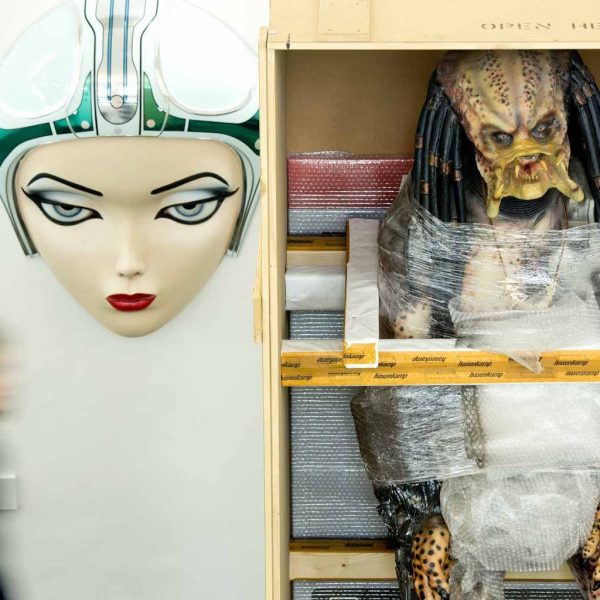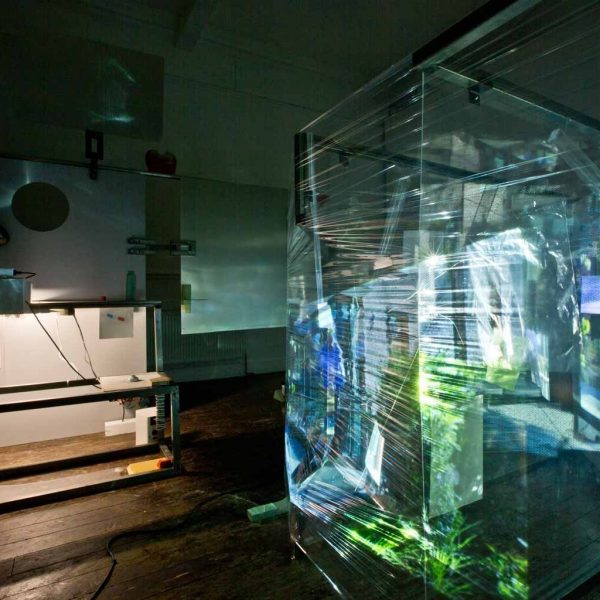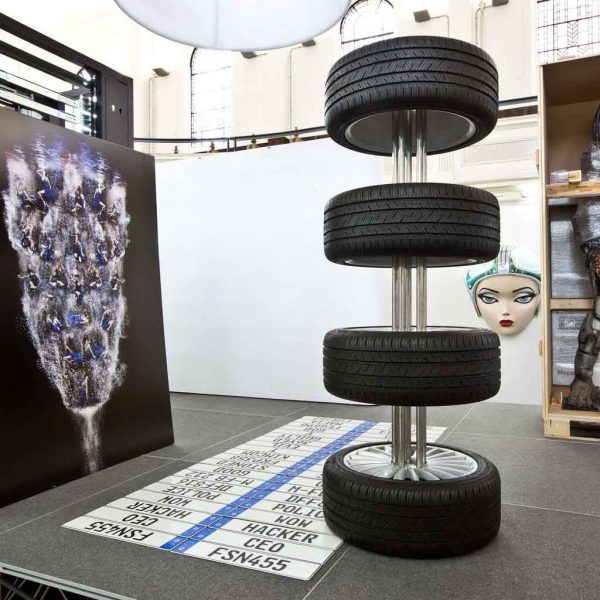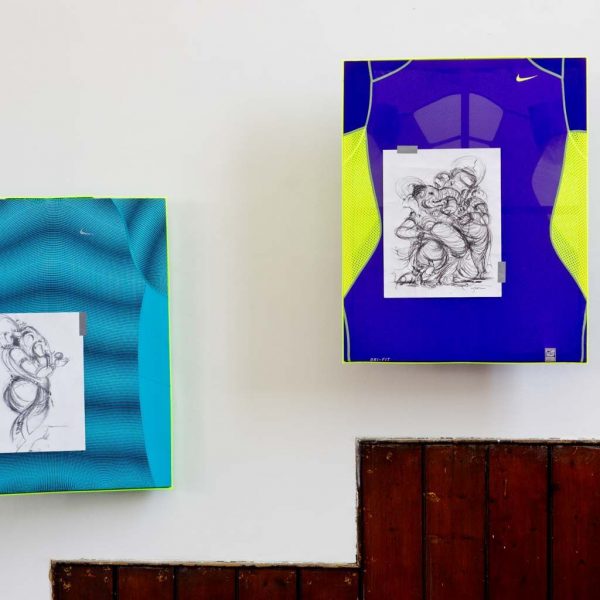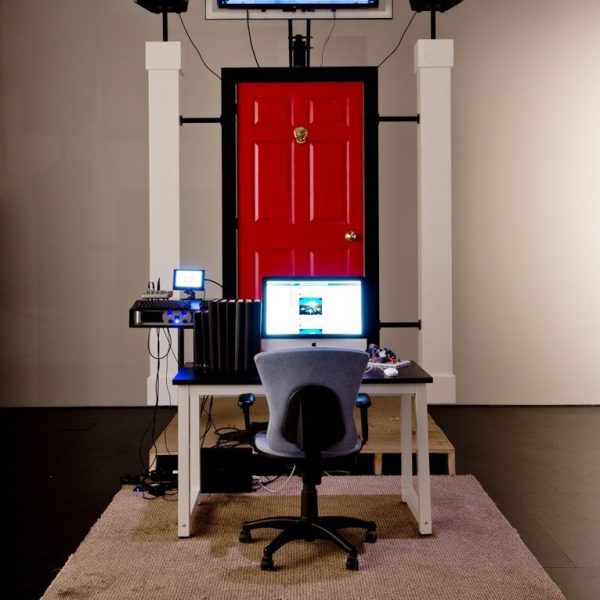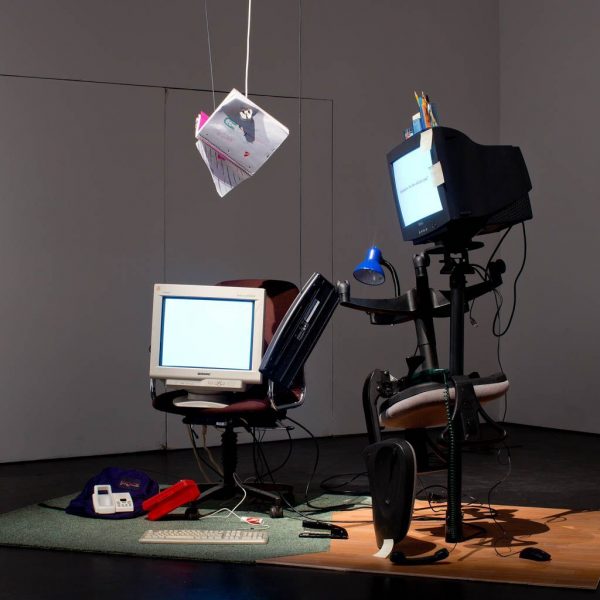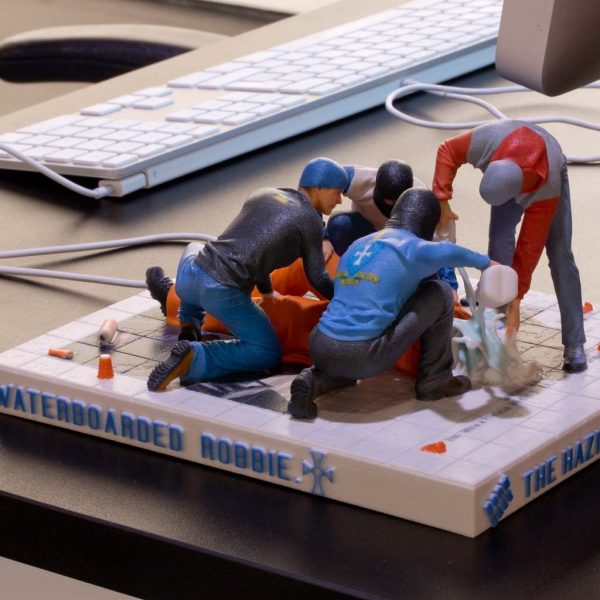
Edited by 編輯 x Ke Qiwen 柯淇雯
Translated by 翻譯 x Cai Sudong 蔡蘇東
The Zabludowicz Collection, founded in 1994 by Poju and Anita Zabludowicz, is dedicated to fostering new audiences and a sustainable environment for contemporary art. The Collection contains over 3,000 works of art by more than 500 artists, spanning four decades of art production. Regarded as one of the world’s most outstanding independent contemporary art collections, its focus is on emerging art from the late 20th century to the present day and is still in constant development. Taking the recent digital art exhibition Emotional Supply Chains as a starting point, Collection Director Elizabeth Neilson talks about her approach to collecting and her future strategy .
為了培養新的觀眾群體和可持續發展的當代藝術環境,薩布多維奇家族在1994年創立了同名典藏館——薩布多維奇典藏館,被譽為全球最頂尖的獨立當代藝術機構之一,該館系統梳理了從20世紀末至今的藝術藏品脈絡,並且持續向前發展。迄今為止,近四十年來五百餘位藝術家的三千多件作品已列為館藏。
以大型數字藝術展覽《情感供應鏈》為線索,ART.ZIP採訪了館長伊麗莎白·尼爾森,聽她來講訴該館在數字藝術方向的收藏方式和未來的發展策略。

ART.ZIP: Would you please give us a brief introduction of Zabludowicz Collection? How was it established?
EN: The collection is two things – a growing collection of contemporary art, concentrating on art since 1990 but going back to the 1940s in a few instances, and a programme of exhibitions, residencies, commissions and publicly facing projects working with living artists. It was founded in the mid 1990s by the Zabludowicz family – from the start they were not just buying art works but also supporting other art organisations.
ART.ZIP: 請您簡要地介紹一下薩布多維奇典藏館?它是怎麽建立的?
EN: 這個典藏館有兩個職能:其一,它是一個不斷增加新藏品的當代藝術收藏機構,主要以1990年之後的當代藝術作品為主,雖然有些藏品可以追溯到1940年代;其二,它有自己的藝術項目,像展覽、藝術家駐地、藝術委託和與公眾一起參與的項目等。它是由薩布多維奇家族於1990年代中期設立的——他們從一開始就不僅收購藝術品,同時也一直支持其他藝術機構。
ART.ZIP: How do you position the Zabludowicz Collection?
EN: It’s a non market orientated family collection with a philanthropic aim to nurture and support art and the surrounding culture that makes that possible.
ART.ZIP: 你是怎麽定位薩布多維奇典藏館的?
EN: 它是一個非市場化的家庭收藏館,它是以慈善為目的的,為了培育和支持現當代藝術,及為現當代藝術提供土壤的周邊文化。
ART.ZIP: What is the Collection’s strategy on acquisition?
EN: We are not just buying works but also commissioning and exhibiting so it’s combination of ways of working to facilitate art practice. Also, we very rarely sell the works we hold – so it’s a growing and very much living collection. We are known for searching out artists and not just going with what is “hot” or shown at art fairs – and that takes time and patience.
ART.ZIP: 該館的收購策略是什麽?
EN: 我們不僅僅是收購作品,還從事委托和展覽,所以這個項目結合了許多工作方式來推動現當代藝術實踐。而且,我們很少出售藏品——所以它是一個成長中的、不斷生長的收藏項目。我們為人所知的原因之一在於我們善於尋找藝術家,而不是追隨那些“大熱”或者藝術市場上曝光率高的東西——這個過程需要時間和耐心。
ART.ZIP: Do you still remember the very first digital art pieces? What are they and how do you make the decision? How are they special and distinct from the others?
EN: In the 1990s when the collection begun digital media of all forms was in its infancy – we have works by artists that are on VHS or laser discs or other obsolete formats from this period and these predate my work with the collection. So digital media has always been part of the collection. It’s not distinct from the rest of the collection – everything requires special attention and conservation. Decisions on what is purchased are based on the work itself – what it does in context but also autonomously.
ART.ZIP: 您還記得你們首批收藏的數字藝術作品嗎?你們怎麽決定收藏這樣的作品的?和別的作品相比,這些作品有什麽特殊的地方?
EN: 1990年代我們的項目剛開始的時候,所有形式的數字媒體都還處於幼年期——我們有那個時期那些使用錄像系統、激光光盤或者其他已經過時的格式錄制的作品,這些作品的收藏早在我加入這個項目之前。所以,數字媒體總是我們項目的一部分。它和其他的藏品沒有不同——都需要特別的關注和保存。我們要購買哪些作品取決於作品在那時的語境下的意義以及作品本身的自治性。
ART.ZIP: Are there any issues or challenges when collecting and exhibiting digital art works?
EN: Conservation is still in development – we keep files in different places and formats – in case of fire or theft but also corruption and obsolescence.
People often think that presenting new media work – including moving image work – that is cheap or easy – it can be… But the hardware can also be expensive and changes so quickly. And spatially the works can be demanding – often an environment will need to be specially created. I don’t think we have done one show where we have had the right equipment in stock – we have always had to buy more! That’s a challenge! There needs to be a better coordinated way of sharing these experience resources amongst art organisations.
ART.ZIP: 在收藏和展出數字藝術作品的時候有沒有遇到過哪些問題或挑戰?
EN: 保存技術還在不斷發展,我們把文件用不同的格式保存在不同的地方,以防火災、偷盜、損壞和失效。
人們總是會認為展出新媒體作品,包括影像作品,是件不費錢或者簡單的事情,事實有可能是這樣,但硬件也是很貴的,而且更新換代也很快。從空間上來說,數字作品的展出也是很難的,因為通常我們要創造一個特殊的展出環境。我不認為我們有哪一次布展的時候有現成的設備可以用——我們總是要買更多的!這就是個挑戰了!或許藝術組織之間需要有一種協調共享這些經驗和資源的方法。
ART.ZIP: What’s the difference between collecting other art forms and digital art? Is there a difference in preservation, ensuring that you have the correct technology to show to work on, even when the technology becomes out of date?
EN: I think I answered that above. It’s a little more demanding than painting. Hence it doesn’t have the same hype or market around it. That gives a certain freedom and for some is a reason to use it in the same way performance was used in the 60s and 70s as a way of staying outside of the art market.
ART.ZIP: 收藏數字藝術作品和其他形式的作品有何不同?是不是在保存技術上有區別,因為總是要確保有合適的技術手段使展出成功,就算這些技術已經過時了?
EN: 我想我已經回答過這個問題了。這比收藏繪畫更有難度。因此這個領域沒有和繪畫一樣的炒作或市場。但這也給數字藝術家帶來了一些自由,對一些藝術家而言,這便像是60、70年代行為藝術一樣,把這當作是一種遊離於藝術市場之外的立場。
ART.ZIP: What do you see as the future of digital art?
EN: I think that there is so much potential and for those that are digital natives (brought up using digital devices and media rather than my generation that adapted to them in their teens) it’s going to be more unusual to think of art in a massive white gallery space than it is on a screen or server. As with industry or photography in the nineteenth century technology will heavily influence the development of art.
ART.ZIP: 您怎麽看數字藝術的前景?
EN: 我認為這個領域有著巨大的潛力,對於那些“數字原住民”(在使用數字設備和媒體的環境中長大的生代,而不是像我們這些到了十來歲才去適應數字設備和媒體的人),他們心目中的藝術更多的是在屏幕上或服務器裡的東西,而不大會是在大型白色畫廊裡的東西。就像19世紀工業、攝影對藝術的影響一樣,技術會大大地影響藝術的發展。
ART.ZIP: Taking Emotional Supply Chains as an example, what’s the most important quality you would pay attention to when selecting artists or works? What about choosing artists for residency programmes?
EN: We often joke about looking for “genius” – a short hand for something unnamable but important – we seek out works which speak to our time and to each other across time. We are hoping to make a collection that embodies what it is to live today, but also somehow transcends that!
From the works on show in Emotional Supply Chains I think you can see a multitude of approaches to art making – from autobiographical and narrative, to more materially focussed. All have a conceptual rigour that is tempered with approachable and accessible ‘ways in’ to the work for viewers.
The decision to pilot our residency in Las Vegas with artists that we planned to include in this exhibition related to the concepts and working methods of those artists. The possibility for them to make new work in Las Vegas wasn’t so much the aim rather we wanted to foster a slower and more engaged way of working with those artists and gain a deeper understanding of their practices.
ART.ZIP: 拿《感情供應鏈( Emotional Supply Chains)》展覽為例,您在選擇藝術家或作品的時候所關注的最重要元素是什麽?選擇駐地藝術家的時候又會關注哪些東西呢?
EN: 我們經常拿“天才”來開玩笑——所謂“天才”,就是那些沒法說明白但卻很重要的人——我們要找的作品必須是那些與我們的時代匹配的,以及跨越時代互相呼應的作品。我們希望我們的藏品能夠體現當下勃勃生機,但又能超越現在的東西。
從《感情供應鏈》展覽上的作品,我想你能看出來藝術創作的多種方法,從自傳式的、敘事式的,到更側重於物質的。這些方法都有概念上的嚴苛,但是因為有了更親近的“接入”方式,作品就更容易被觀看者接受。
我們在拉斯維加斯的駐地項目要邀請什麽樣的藝術家和這些藝術家的想法和工作方法有關。與其說我們寄望這些藝術家在拉斯維加斯的項目上做出什麽新鮮的成果,倒不如說我們更希望創設一種與這些藝術家共事的慢節奏、參與度更高的工作方式,使我們對他們的創作實踐有更深入的了解。
ART.ZIP: Are there any more upcoming projects/programmes related to digital art?
EN: We continue to research and acquire digitally based works but it’s not an exclusive focus – we have an upcoming project looking at the rise and effect of the digital on image making that will take place in 2017, as well as continuing to collect the works that are produced via the Daata Editions platform.
ART.ZIP: 接下來還有和數字藝術相關的項目或者計劃嗎?
EN: 我們會繼續研究、獲取數字形式的作品,但我們不會僅僅關注這個。我們在2017年會舉辦一個關於影像制作中數字技術的采用和影響的項目,同時我們也會繼續收集通過“數據版本(Daata Editions)”平台制作的作品。

